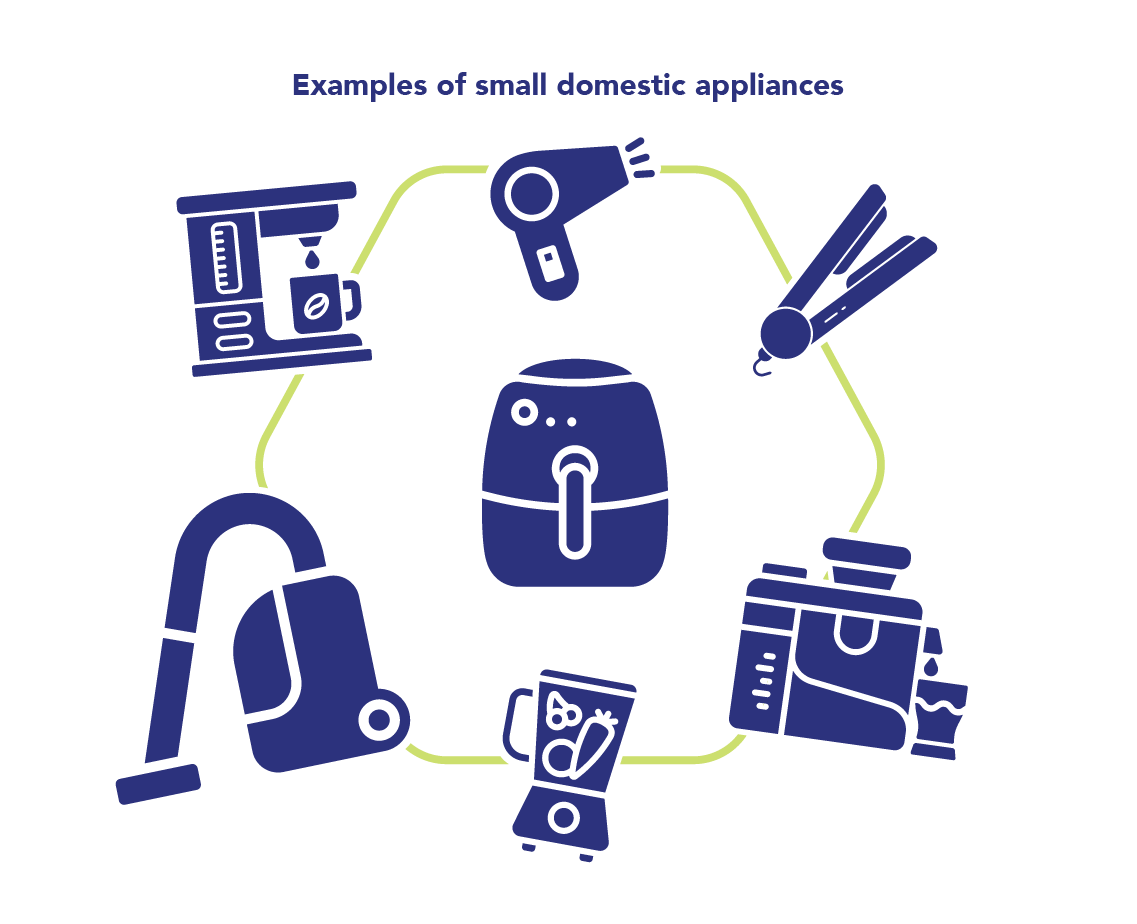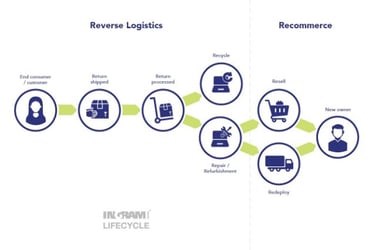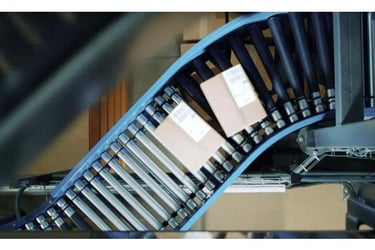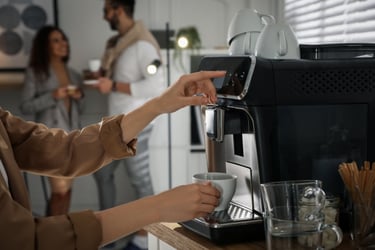Are you facing a high volume of small domestic appliance (SDA) returns from consumers and want to understand the causes?
There are a myriad of reasons why consumers return small domestic appliances. Every return increases the cost to the manufacturer or retailer they purchased from. The more returns you process, the higher the cost implications are.
Understanding why returns occur in the first place can help you mitigate these.
Did you know that e-commerce sales experience three times as many product returns (30%) compared to bricks and mortar sales (8.89%)? When shopping online, 67% of consumers check the returns policy before purchasing, influencing their purchase decisions.
Ingram Micro Lifecycle manages technology product returns for many reputable household brands, including global retailers and OEMs (Original Equipment Manufacturers).
Below, we discuss the reasons behind consumers returning their small domestic appliances.
What is a Small Domestic Appliance
Also known as small home appliances, these are practical electrical products that fall outside the white goods or major appliance category.
They are typically portable or semi-portable to achieve a household task.
This category includes vacuums, kettles, coffeemakers, hairdryers, and food processors.

Why returns can be a problem
Due to the higher costs of these products, returns usually experience a spike around seasonal shopping periods, such as Black Friday or Christmas. This correlates to peak sales around the seasonal discounts available in-store and online.
Returns management therefore is not a steady operation and you must be agile to cover the increased pressure at key periods. These items can be bulkier which requires a larger warehousing footprint to accommodate the influx.
You need not only physical space, but digital space too, including systems, to accurately and transparently log all returns data. This includes noting all the reasons for returns and outcomes so these can be tracked and monitored, being passed to product development if necessary.
Processing refunds is an extra cost to your outgoings. Repaired and repackaged returns can be resold to recover some costs. These will have a lower value than the original sales price as they’re in a used condition.
Returns must be processed quickly to recuperate as much value as possible and tackle depreciation. This process takes up time and extra resources too.
11 reasons why consumers return SDAs
As a 3PL provider for technology customers, these are the top reasons we see behind SDA returns.
We include both legitimate and fraudulent reasons below.
1. The customer ordered the wrong product
Any issue with the consumer ordering the wrong item is likely to be unintentional. For example, they could’ve ordered the wrong model, size, or color.
2. The wrong product was shipped
Human error or a fault in the matrix when readying the product for dispatch can cause this.
3. The product wasn’t what they expected
Customers may try to use the SDA with a preconception of how it will perform. The reality doesn’t always meet their expectations.
This can happen when a customer switches manufacturer. They’re used to how one manufacturer instructs the operation of the product that they can’t grasp or understand in a different way.
4. Rethinking the cost
In hindsight, sometimes the cost outweighs the real need for the product. The consumer experiences buyer’s remorse and sends the appliance back.
This can be the case for products that are more on the luxury side of necessity.
5. Actual or perceived fault
There may be a technical issue with the product. More often, the customer has difficulty using a specific function.
Damage may have occurred during shipping. If this is regularly the case, then you may need to review your packaging and logistics. Utilizing returns avoidance diagnostics will lower the volume of returns.
Up to 80% of product returns are reported as broken or damaged.
6. Unwanted gift
It can be a well-meaning gesture to buy someone a practical gift. Sometimes a well-meaning gesture can be misplaced if it’s a duplicate or just unwanted.
7. Cheaper elsewhere
A consumer may buy an appliance and receive an email the next day to say the product is on offer through another retailer. There could be a more attractive package available or a different color or model that they’d prefer.
They take up the more appealing offer and return the appliance they previously bought. They know the return can be hassle-free, no questions asked.
8. Loopholes in returns policies
With a view of improving customer satisfaction, these often make it easy to return goods with low effort required by the consumer. 'Returns abuse' is where customers continue to exploit the policy.
Over 40% of electronics retailers reported that up to 10% of returns made were abusing the returns policy.
The gesture of goodwill could lead to inflated volumes of returns.
9. Late delivery or items no longer needed
This may be through no fault of your own. The consumer could’ve ordered too late, or there could’ve been delays with the delivery partner.
If a new appliance is for a special occasion, perhaps as a wedding gift or present, and the item isn’t delivered until afterward, the consumer may have bought a replacement elsewhere.
Consumer dissatisfaction with the delivery time could make them buy elsewhere.
Friends and TV adverts could also dissuade them from their original choice while awaiting delivery.
Fraudulent returns
While these make up a minority of returns, we can’t ignore the fact that they do happen. Here are two fraudulent reasons that may be behind customer returns.
10. Money laundering
Money laundering occurs when a customer buys a product on a stolen credit card and tries to get a refund in cash.
Always make sure to process any refunds onto the same card used in the transaction or give in-store credit.
11. Unable to resell
Bulk devices ordered on credit may be resold for an inflated price. This is more likely when a luxury or limited edition appliance may be in high demand in your area, or retailer stock is running low.
Scalpers buy up whatever stock they can, ready for resale at an increased price.
They return anything to you that they’re unable to sell or make a profit on for a refund.
Lower your returns rate and recover value today
A good returns partner adds value through the swift processing of returned small domestic appliances. They’ll conduct a thorough analysis to determine if the product can be repackaged and resold, or whether repairs are required. Where possible, appliances will become ready for resale or re-use to cost-effectively recover value.
Their experience and refined processes will quickly get the product back out for resale, enabling the highest value recovery possible. This will relieve you of the burden of having these products on your balance sheet.
Ingram Micro Lifecycle offers this as part of our commitment to enabling a circular economy for our customers. Reach out to us today to discuss your current returns program and how we can save you money.
Additional reading:













